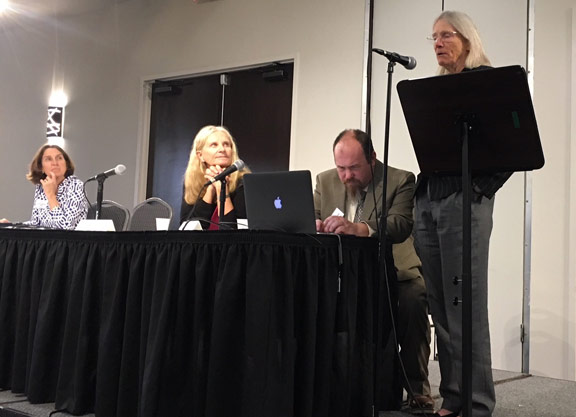In the latest in a series of webinars hosted by the Grayson-Jockey Club Research Foundation Tuesday, Dr. Sue Stover, Professor of Surgical and Radiological Sciences at UC Davis School of Veterinary Medicine, spoke on what veterinarians have learned from the California Necropsy Program.
“The program was not only created to find the nature of injuries, but also to see how they are developed and prevent them,” Dr. Stover said. “We are trying to reduce horse injuries as well as jockey injuries.”
Dr. Stover showed evidence that most catastrophic injuries are associated with pre-existing injuries and discussed the importance of proper diagnostics and signs of early detection, such as changes in demeanor.
“[Because of the Necropsy program], We now know where to look for these issues and identify risk factors for injury,” Dr. Stover said. “We know with early detection horses can be easily managed. Making diagnostic tools more readily available will help identify these injuries.”
Dr. Stover went on to cover how a horse's musculoskeletal system is affected by the rigors of training.
“I have heard Dr. Larry Bramlage say this and I cant say it any better, 'Horses aren't built with racehorse skeletons. Training makes racehorse skeletons.'” Dr. Stover said. “Bone is a manipulative tissue. It responds with exercise. The faster the horse goes, the more pressure on the bone. It then becomes larger to support the higher pressure.”
Dr. Stover spoke about the importance of slowly building a horse up in their exercise routine and avoiding repetitive loading, which cracks and wears down the bone.
“Bone needs to see the new level of work for a short period of time,” Dr. Stover said. “It responds to the level of work not the amount of work. Shorter works over a longer period of time to avoid bucked shins. Let the horse increase his speed for the last half-furlong or furlong and the bone says, 'Okay, I am seeing more stress then I'm used to. I need to put a little bone here.' The bone needs to adapt before it can take a lot of pressure.”
In addition to over-training, the UC Davis veterinarian warned on the dangers of over-campaigning with very little opportunity for recovery and how they lead to injuries in older horses. She also spoke about how relatively little exercise is required to maintain bone mass once a horse has reached a certain level in his or her training.
“Maintaining fitness requires less effort than it did to get the bone to enlarge and adapt from that activity,” Dr. Stover said.
Dr. Stover concluded her talk by saying, “Lessons we are learning from necropsy program can help us with equine and jockey safety. Knowledge and detection are key.”
The next webinar in the series is entitled, “Equine Injury Database: 2019 Statistics and Racing Fatality Data,” and the presenter is Dr. Tim Parkin.
Not a subscriber? Click here to sign up for the daily PDF or alerts.






